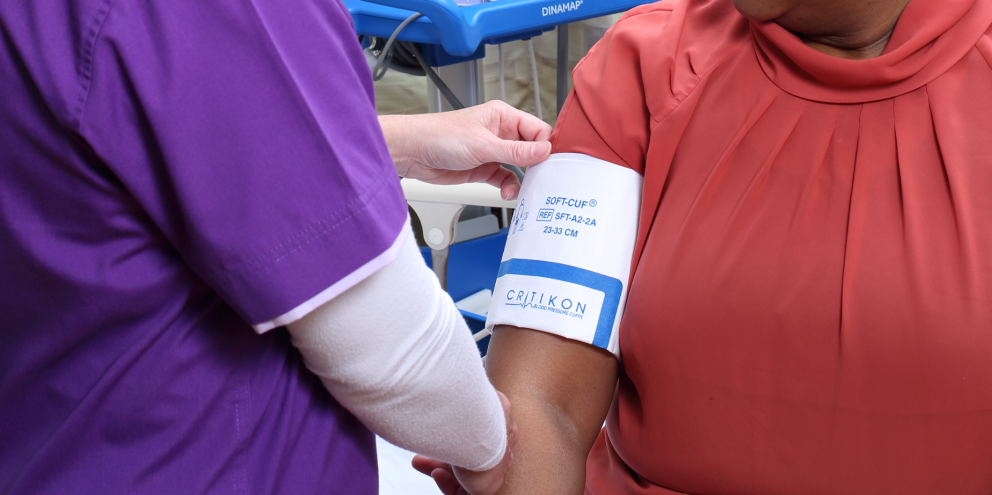
In most healthcare settings, BP information helps clinicians with tasks such as directing treatment, identifying clinical deterioration, and guiding vasoactive drug titration. Unfortunately, suboptimal clinical BP measurement has led to inappropriate hypertension diagnosis in some 84 million people worldwide, according to the American Medical Association.1 Furthermore, the association states that inaccurate BP readings can lead to erroneous treatment decisions in up to 45% of cases.1
Accordingly, clinicians need to take exceptional care to secure accurate BP readings. By knowing several factors that can cause inaccurate measurements in certain types of patients – and how to avoid them – caregivers can plan for and implement optimal BP measurement techniques.
What makes BP Readings Inaccurate?
There are various potential causes for inaccurate in BP readings; they can relate to measurement devices, clinical procedures, and the characteristics and habits of patients themselves.
Factors related to devices
Blood pressure can be measured invasively using a catheter (considered the gold standard), but most measurements are taken noninvasively using inflatable cuffs applied to the upper arm. These cuffs can contribute to inaccurate readings in two basic ways:
- Inaccurate devices. It is common for devices to be used that have not met standards for accuracy validation. Manual as well as automatic BP devices can over- or underestimate systolic and diastolic BP.
- Compromised or poorly calibrated devices. BP monitoring devices must be kept intact and be calibrated at least once per year. And yet, this does not always happen. For example, in one hospital in Egypt, researchers discovered a high leakage rate, greater than 80 mmHg, in nearly 35% of sphygmomanometers. This leakage made calibration measurements irrelevant. Of the devices tested in the study, only 5.2% passed all points of physical assessment.4
Factors related to clinical procedures
In practice, according to the World Hypertension League, recommendations for acquiring accurate and reproducible BP readings are rarely followed.5 Clinicians can skew results by:
- Neglecting to place the patient in the correct body position
- Failing to allow patients adequate rest before measurement
- Choosing cuffs of inappropriate size
- Placing the cuff over clothing
- Talking to patients while acquiring measurements
Factors related to patient characteristics
Various factors related to patients’ habits and lifestyle choices can affect BP readings. The Journal of Hypertension lists several possible causes of inaccurate resting BP measurement in adults, gathered from a review of 328 full-text articles.2 They include:
- Acute use of alcohol, nicotine, or caffeine. Consumption of caffeine, ingestion of nicotine, cigarette smoking and even exposure to second-hand smoke have been reported to cause small to large increases in systolic and diastolic BP. In particular, acute use of alcohol before measurement can significantly increase or decrease both BP measurements.
- Bladder distention. Several studies have linked a full bladder to systolic and diastolic BP increases.
- Cold temperature. Exposure to cold can increase systolic blood pressure moderately to significantly.
- Recent meals. Patients who eat shortly before a BP measurement can exhibit decreased systolic and diastolic BP, according to a limited number of studies.
- White-coat syndrome. Estimates are that some 20% of people exhibit elevated blood pressures merely by being in the presence of a clinician.3
Ensuring Accurate BP Measurement
The American Heart Association recommends several steps clinicians can take when choosing and applying cuffs to help ensure optimum BP measurements. The association reports that as many as 84% of patients experience "miscuffing" – mostly where large arms are fitted with cuffs that are too small. Therefore, clinicians should take extra care to use the right cuffs with patients who have greater upper arm fat or muscle mass.6 In summary, the AHA recommends:
- Correctly measuring the circumference of the patient’s arm – at the midpoint of the acromion and olecranon.6
- Choosing a cuff with a length of 75-100% of arm circumference. In width, the cuff should be 37–50% of the arm circumference, for a 2:1 length-to-width ratio.6
- Placing the cuff on bare skin, but without rolling up the patient's sleeve, as that can create a tourniquet effect.6
Accurate blood pressure measurements are essential to patient care. Clinicians who take the necessary steps to avoid errors related to devices, procedures, and patient characteristics will be able to treat patients with optimally accurate and reliable information in hand.
References
[2] https://www.ncbi.nlm.nih.gov/pmc/articles/PMC5278896/
[3] https://www.health.harvard.edu/blog/could-white-coat-hypertension-harm-your-heart-2019112918384
[4] https://www.nature.com/articles/s41371-020-00424-0
[5] https://onlinelibrary.wiley.com/doi/epdf/10.1111/jch.13915
[6] https://www.ahajournals.org/doi/full/10.1161/HYP.0000000000000087







